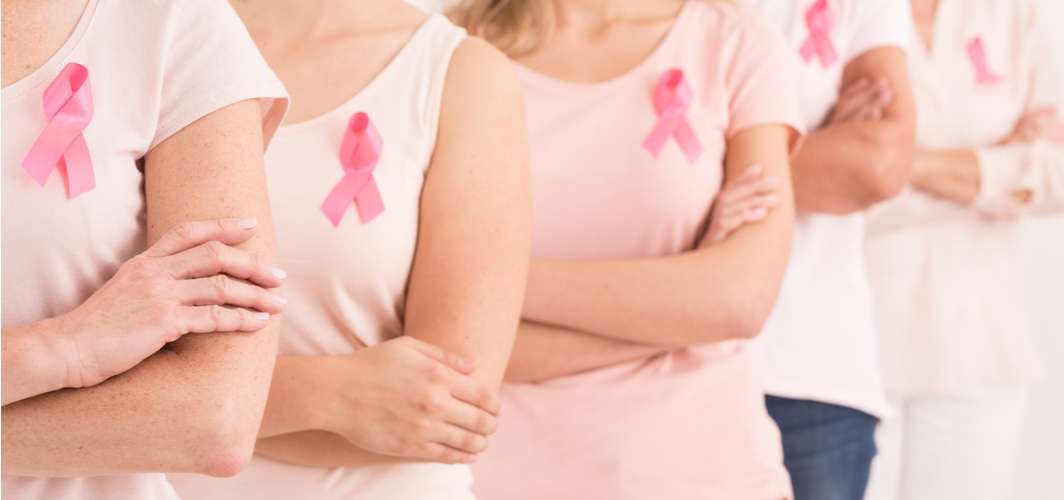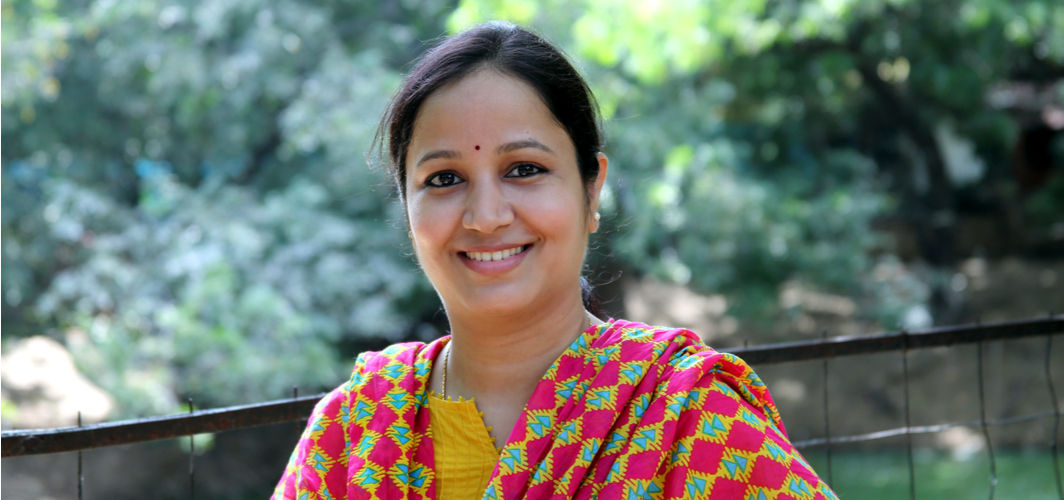Women's Wellness
The Most Common Cancers Affecting Women
8 min read
By Apollo 24/7, Published on - 14 April 2021, Updated on - 18 October 2022
Share this article
0
9 likes

Cancer is a disease that develops due to the abnormal multiplication of cells in the body. It can develop due to several reasons including genetic mutation, lifestyle and habits like smoking, viral infection, chronic inflammation, and obesity. Cancer can affect anyone, irrespective of their gender and age. However, some cancers are more prevalent in women across the world.
Cancers prevalent in women
Some cancers that only affect women are called gynecologic cancers and include the cancer of the uterus, ovaries, cervix, vagina and vulva. Women can also develop other types of cancer that affect all people.
1. Breast cancer
Breast cancer is the most common type of cancer diagnosed in women across the world and in India. As per the World Health Organization’s (WHO) Global cancer statistics 2020 (GLOBOCAN 2020) report, more than 2.2 million cases of breast cancers were reported in women in the year 2020. Though breast cancer is usually seen in women aged 40 and above, it can develop at any age. The survival rate of breast cancer (if it does not spread to other parts of the body) is up to 99%, which means that it can be cured effectively if diagnosed early.
2. Gynaecologic cancers
Gynecologic cancers are the ones affecting the reproductive organs of women. The five main types include:
- Ovarian cancer: Ovarian cancer usually affects women in the age group of 50 to 79 years. It affects the ovaries, the organ that forms the eggs and sex hormones. Obese women and those with a family history of ovarian cancer are at high risk of developing ovarian cancer. Though ovarian cancer is the 8th most commonly occurring cancer in women, it has an overall survival rate of 88%.
- Uterine cancer: Also called endometrial cancer, uterine cancer affects the uterus, the organ that holds the baby during pregnancy. It is most prevalent in obese women or in those receiving hormone replacement therapy (therapy to restore sex hormones after menopause). Endometrial cancer has an overall survival rate of 81%.
- Cervical cancer: Cervical cancer affects the cervix, the outer part of the uterus and usually occurs due to mutation in the DNA. The risk of developing the disease is high in women suffering from HPV infection, smokers, and the ones using oral contraceptives. Cervical cancer has an overall survival rate of 66%.
- Vulvar cancer: Vulvar cancer affects the outer part of the female genital organs, called the vulva. The risk of developing vulvar cancer increases in smokers or women suffering from HPV or HIV infection.
- Vaginal cancer: Vaginal cancer affects the vagina, a hollow tube-like structure between the outer genitals and the uterus. Previously diagnosed HPV or HIV infection and smoking increase the risk of developing vaginal cancer. Both vulvar and vaginal cancers are relatively rare.
3. Colorectal cancer
Colorectal cancer affects the colon (intestines) and the rectum and is the second most commonly occurring cancer in women. More than 8 lakh cases of colorectal cancer were reported in women in the WHO’s GLOBOCAN report of 2020. The survival rate of colorectal cancer is 63%, but if the cancer is localized, then the rate increases to 91%.
4. Lung cancer
Though globally the cases of lung cancer are reported more in men, it is the third most commonly occurring cancer in women. As per the WHO’s GLOBOCAN 2020 report, 770828 new cases of lung cancer were reported in women across the globe.
What are the early warning signs of cancer in women?
The early signs of cancer can be vague and similar to those of other conditions. However, some signs that may indicate the development of cancer include:
Signs involving the reproductive system:
- Abnormal bleeding from the vagina
- Bleeding from the vagina after menopause
- Spotting between two cycles of periods
- Heavier or longer bleeding than normal
- Pain during sexual intercourse
- Bleeding after sexual intercourse
- Dark foul-smelling discharge from the vagina
- Palpable vaginal mass
- Change in the colour of external genitals
- Continuous itching in the genital area
Signs involving the gastrointestinal system:
- Persistent indigestion, bloating and cramps without menses
- Constant pressure on the urinary bladder
- Difficulty urinating
- Constipation or blood in the stool
Signs involving the breasts:
- Lumps in the breast or armpit
- Change in the colour of the breast or nipple
- Discharge from the nipple (without lactation)
General signs:
- Persistent fatigue and nausea
- Sudden loss of weight without exercising or changing the diet
- Loss of appetite or feeling of fullness all the time
- Constant pain in the abdomen or pelvic region
- Prolonged coughing
The presence of one or more of these signs does not confirm the development of cancer. However, if any of these symptoms persist for two weeks or longer, one should seek the advice of a doctor.
What are the risk factors for cancer?
Factors that may increase a woman’s risk of developing gynecologic, breast or other types of cancers include:
- Family history of breast, ovarian or uterine cancer
- Giving birth to a child after the age of 30 years
- Receiving hormone replacement therapy after menopause
- Getting exposed to radiations at an early age
- Genetic changes in Breast Cancer gene 1 (BRCA1) and Breast Cancer gene 2 (BRCA2), which normally help repair damaged DNA
- Obesity (body mass index of more than 30)
- Smoking.
What can be done to reduce the risk of developing cancer?
One cannot prevent cancer completely but the possibility of developing cancer can be reduced by:
- Quitting smoking: Women, who smoke should quit the habit as it increases the risk of developing different cancers including cancer of the lungs, vulva, vagina and cervix.
- Maintaining a healthy weight: Studies reveal that overweight or obese women are at increased risk of developing uterine, breast, and colorectal cancers. Women must practise moderate-intensity exercises such as brisk walking, cycling or swimming regularly for at least half an hour to maintain a healthy weight.
- Limiting alcohol intake: Women should quit or reduce the consumption of alcohol to an occasional drink, as alcohol increases the risk of developing breast cancer and colorectal cancer.
- Getting vaccinated: As soon as women attain the age of 9 years, they should get vaccinated for the Human Papillomavirus (HPV), which is a very common sexually transmitted infection and can result in cervical, vaginal, and vulvar cancers. The HPV vaccine is said to be most effective if administered before 26 years of age.
- Getting screened frequently: Women should get cancer screening tests done frequently to diagnose the disease even before the symptoms start to appear.
- Consuming a healthy diet: Women should consume a diet containing foods rich in calcium, protein, vitamins and healthy fats. Processed and high-fat foods should be avoided to maintain a healthy weight and reduce obesity.
- Genetic testing: Women who have a relative, sibling or a family member who developed breast or ovarian cancer before the age of 45 years must get their genetic testing done to assess their risk.
- Look out for early signs: Women must consult their doctor if they experience any early warning sign of cancer.
Which cancer screening tests should women get done routinely?
Screening tests help in detecting any type of cancer at an initial stage when it can be cured completely. Different screening tests that are required for different cancers involve:
1. Gynaecological cancer screening
Apart from pelvic examination, gynaecological cancers can be screened with the help of:
- Pap smear: Pap smear tests help in detecting precancerous and cancerous cellular changes in the cervix. Women over the age of 21 years can get a Pap smear done. If the results of the Pap smear are normal, the test would be repeated after 3 years.
- HPV test: The HPV test is done to detect the presence of human papillomavirus, which can induce cancer. Women in the age group of 30 to 65 years can get their HPV testing done. If the results of the HPV are normal, the next screening is done after 5 years.
2. Breast cancer screening
Breast cancer screening can be done in two ways, which include:
- Mammogram: A mammogram is like an X-ray of the breast, which helps in detecting any abnormality in the breast at an early stage. Women in the age group of 50 to 69 years must get their mammography screening done every 2 years.
- Breast MRI: A breast MRI is used along with mammograms to screen women who are at high risk of developing breast cancer.
3. Colorectal cancer screenings
After the age of 50, women should get a stool test, flexible sigmoidoscopy (examines the rectum and the lower third of colon) or colonoscopy (examines the rectum and the entire colon) every 5 years to detect the presence of any abnormal mass (polyp) or cancerous lesion.
4. Lung cancer screenings
People between the age of 50 to 80 years with a history of chronic smoking or smoking more than 20 packs of cigarettes a day must get a low-dose CT scan (LDCT) done every year. People who have quit smoking within the past 15 years should also get screened.
Conclusion
Cancer can be cured effectively if diagnosed at an early stage. While most gynecologic cancers are detected during a regular screening procedure, screening of other types of cancer should be done periodically. Women must self-examine their breasts and genital organs for any change in colour, size, masses or lumps. Any such change should be reported to a general physician or gynaecologist. Early detection of cancer can help the doctor decide the type of therapy to increase the chances of survival of cancer patients while improving their quality of life.
Women's Wellness
Leave Comment
Recommended for you

Women's Wellness
5 Major Health Issues Every Woman Should Know About
Women are at a higher risk of several diseases than men. Adopting healthy habits and regular clinical checkups can significantly reduce the risk of these diseases in women.

Women's Wellness
Can Menopause Contribute to the Development of Osteoporosis?
Research shows that women can lose about 20% of bone mass in the first five to seven years post-menopause.

Women's Wellness
Endometriosis: The Hidden Cause of Severe Menstrual Pain
Severe period pain could be a sign of endometriosis, a condition where the endometrium develops in places other than the inner lining of the uterus.
Subscribe
Sign up for our free Health Library Daily Newsletter
Get doctor-approved health tips, news, and more.
Recommended for you

Women's Wellness
5 Major Health Issues Every Woman Should Know About
Women are at a higher risk of several diseases than men. Adopting healthy habits and regular clinical checkups can significantly reduce the risk of these diseases in women.

Women's Wellness
Can Menopause Contribute to the Development of Osteoporosis?
Research shows that women can lose about 20% of bone mass in the first five to seven years post-menopause.

Women's Wellness
Endometriosis: The Hidden Cause of Severe Menstrual Pain
Severe period pain could be a sign of endometriosis, a condition where the endometrium develops in places other than the inner lining of the uterus.